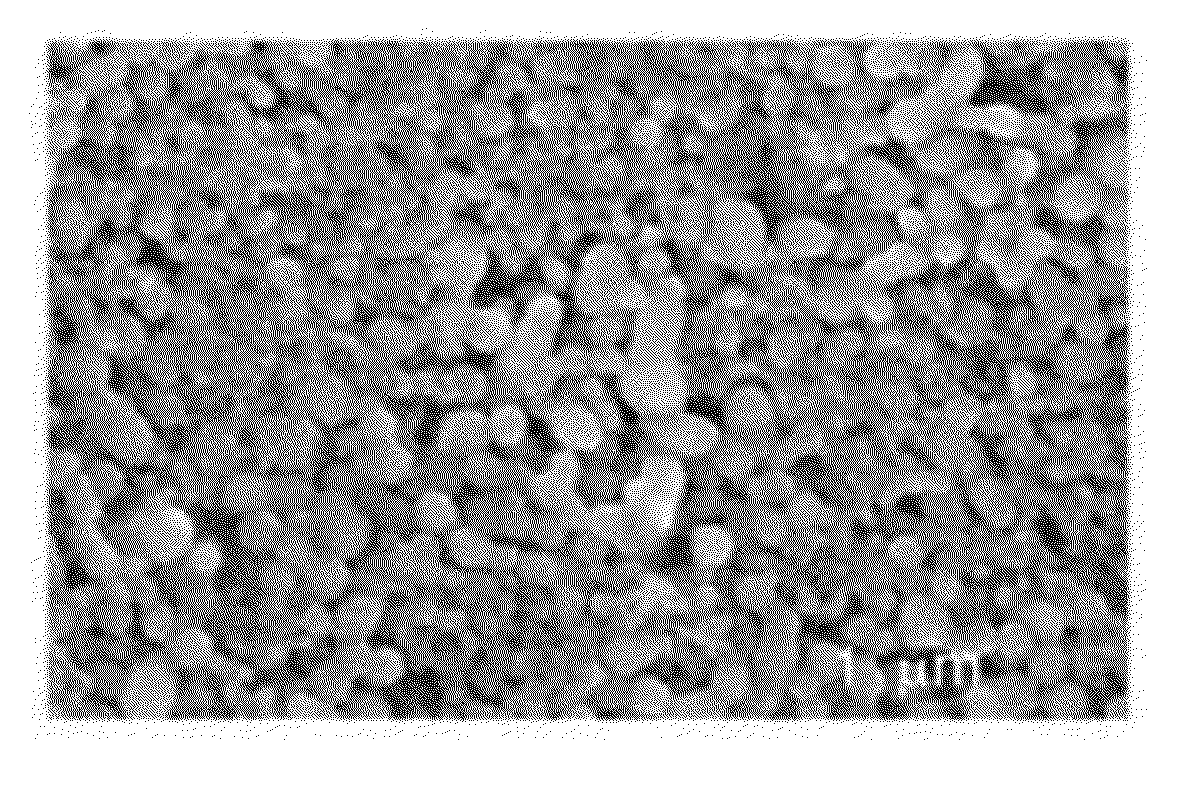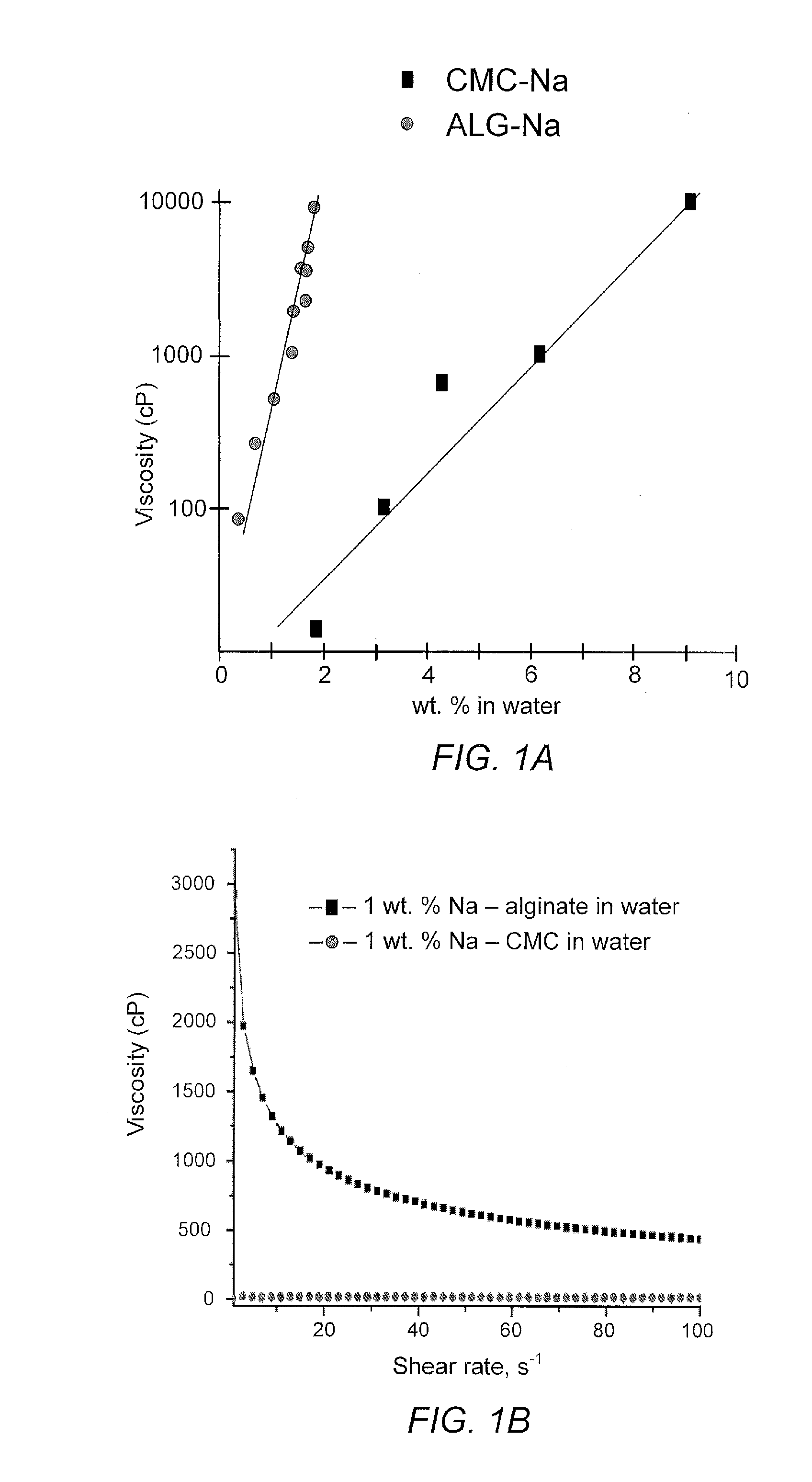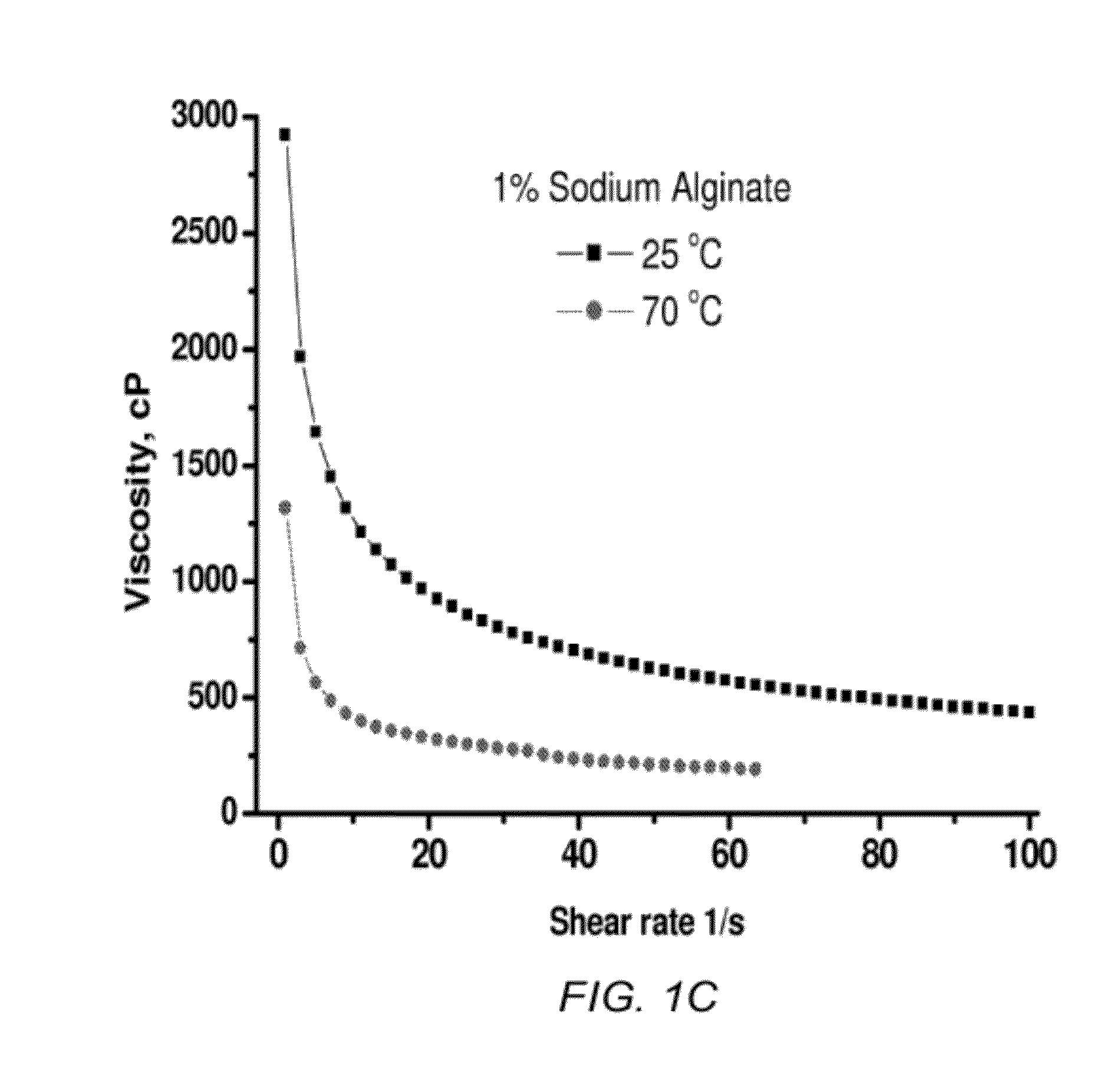Alginate-containing compositions for use in battery applications
a technology of alginate-containing compositions and battery applications, which is applied in the direction of cell components, cell component details, coatings, etc., can solve the problems of reducing the resulting anode capacity, and reducing the stability and capacity properties of the anod
- Summary
- Abstract
- Description
- Claims
- Application Information
AI Technical Summary
Problems solved by technology
Method used
Image
Examples
examples
[0080]The various embodiments of the present invention are illustrated by the following non-limiting examples.
Materials and Methods
[0081]Materials. Sodium alginate (sodium salt of alginic acid) was derived from Macrocystis pyrifera algae (also called Giant Kelp) and acquired from MP Biomedicals LLC, USA. Si nanopowder (NP-Si-L50, 98% purity, MTI Corporation, USA) and C additives (PureBlack® 205-110 and ABG1010, mixed in a 1:1 wt. ratio, all produced by Superior Graphite, USA) were used as active materials for the Si electrode preparation; graphite powder (Superior Graphite, USA) was used as an active material for graphite electrodes. The electrolyte used in electrochemical cells was composed of 1M LiPF6 salt in a mixture of carbonates (Novolyte Technologies, USA).
[0082]Characterization. Ellipsometry studies on swelling of polymer films deposited on Si wafers in carbonates were performed using a COMPEL automatic ellipsometer (InOmTech Inc., USA) at an angle of incidence of 70° Si waf...
example # 1
Example #1
Assessment of Binder Performance Under Extreme Conditions
[0086]To assess binder performance under extreme conditions, charge-discharge cycling to nearly 100% depth-of-discharge (DoD) (to 0.01 mV vs. L / Li+) were performed without limiting the intercalation capacity. In contrast to studies on CMC binders, which often requires low Si (33 weight percent (wt. %)) and high binder and carbon additive (33 wt. % / each) content, a high ratio of Si to C (Si:C=3:1) and a considerably smaller amount of binder (15 wt. %) were used for our tests. Alginate was used as a binder in the experiments. The electrode slurries (water with a small addition of (about 10 wt. %) alcohol was used as a solvent) were thoroughly mixed using an ultrasonic bath and a laboratory stirrer at 600 rotations per minute (rpm) for at least 1 hour, cast on an 18 micrometer (μm) Cu foil (Fukuda, Japan) using a 150 μm doctorblade, dried in air first at room temperature and then at 60 degrees Celsius (° C.) for at leas...
example # 2
Example #2
Comparison of Na Alginate and PVDF Binders
[0089]The ratio of M-to-G monoblocks in alginates may range from 0.3 to 9, with a typical value in commercial samples being ˜1. Nuclear Magnetic Resonance (NMR) spectroscopy measurements, illustrated in FIG. 5, reveal that the ratio of M-to-G monoblocks in the Na alginate sample used for the studies, described below, was 1.13. This ratio was calculated based on integration of the peaks at 4.7, 5.3 and 5.7 ppm. Atomic force microscopy (AFM) studies showed that in dry state films made of the Na alginate exhibit approximately 6.7 times higher stiffness than dry films of PVDF, shown in FIGS. 6 and 7. Interestingly, when immersed into an electrolyte solvent the stiffness of alginate did not change significantly, shown in FIG. 8, while the PVDF films became nearly fifty times softer, shown in FIG. 9. Further, ellipsometry studies show no detectable swelling of thin (˜70 nm) Na-alginate films in the electrolyte solvent vapors. In contrast...
PUM
 Login to View More
Login to View More Abstract
Description
Claims
Application Information
 Login to View More
Login to View More - R&D
- Intellectual Property
- Life Sciences
- Materials
- Tech Scout
- Unparalleled Data Quality
- Higher Quality Content
- 60% Fewer Hallucinations
Browse by: Latest US Patents, China's latest patents, Technical Efficacy Thesaurus, Application Domain, Technology Topic, Popular Technical Reports.
© 2025 PatSnap. All rights reserved.Legal|Privacy policy|Modern Slavery Act Transparency Statement|Sitemap|About US| Contact US: help@patsnap.com



